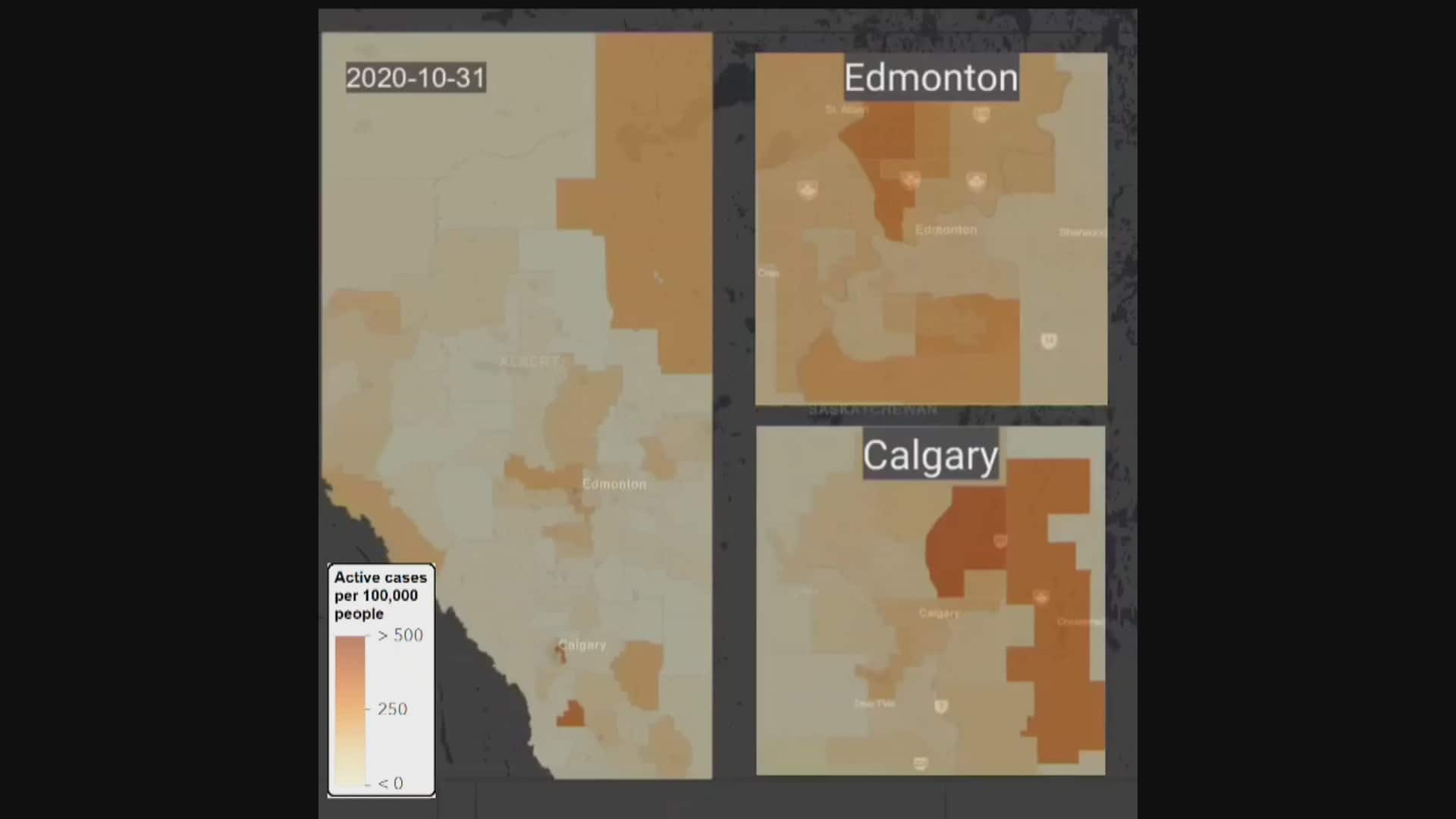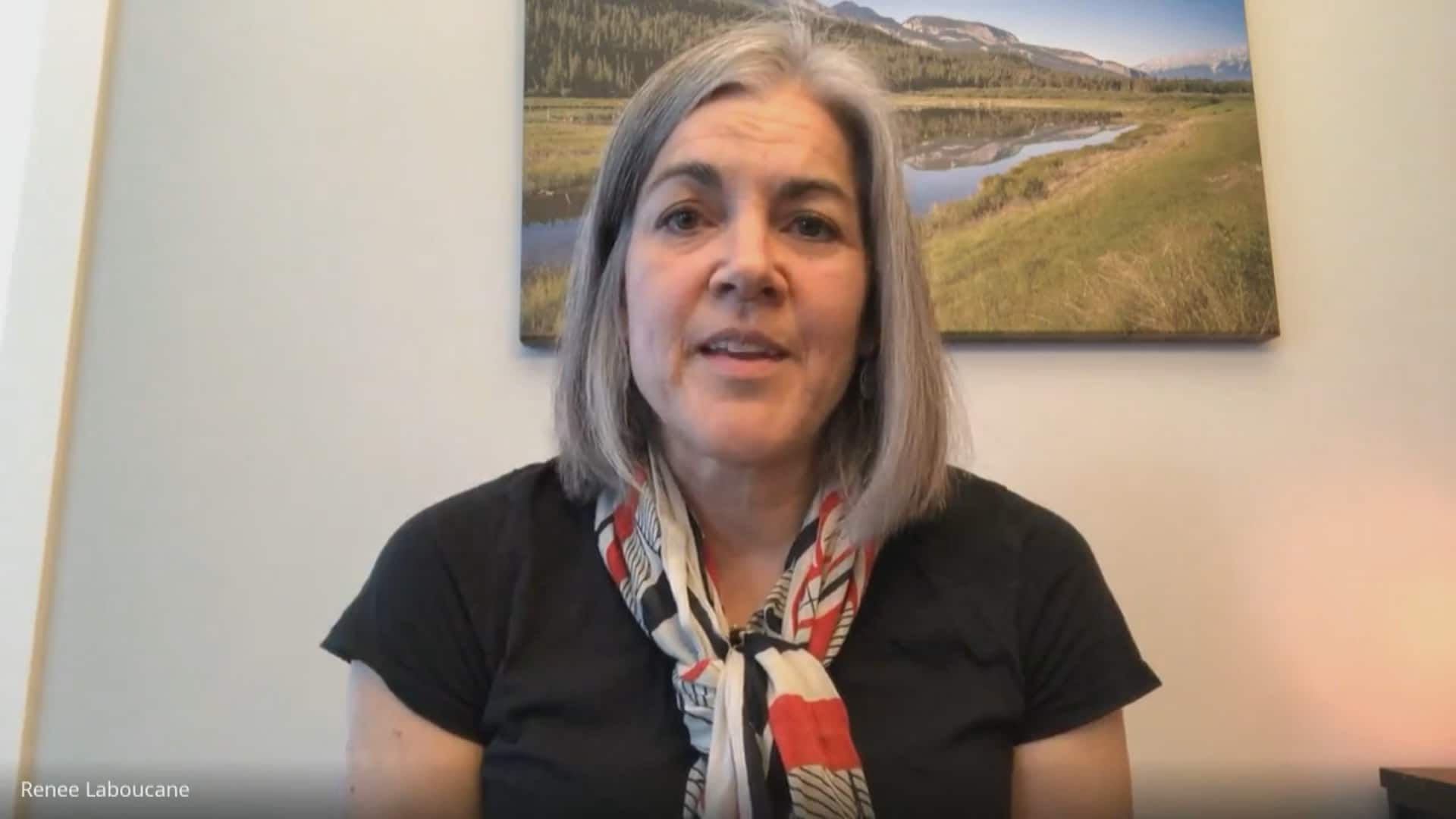
It was inevitable, the premier said.
Though there were only dozens of cases of the coronavirus SARS-CoV-2 reported in Canada, health officials were resigned that the pandemic would eventually spread into Alberta.
A news bulletin went out in the late afternoon March 5, with few details aside from confirmation that a presumptive case had been confirmed.
Less than an hour later, the province’s chief medical officer of health took to the podium.
“Uh, you all know, my name is Dr. Deena Hinshaw,” she said. “I’m here, as you know, to provide an update on COVID-19 in Alberta.”
Hinshaw went on to provide more details: the presumptive case was a woman in her 50s who had been on board the Grand Princess cruise ship, which was quarantined off the coast of California.
The provincial government sent word to travellers returning from outside Canada: monitor your symptoms. The next day, Alberta Premier Jason Kenney commented on the first case.
“Obviously, we are concerned about this initial presumptive case,” he said. “Given the breadth of this virus around the world, [it was] likely inevitable that we would see some manifestation of it here in Alberta.”
Nearly a year later, Hinshaw needed to introduce herself to Albertans no longer — she had become a fixture when it came to her daily updates on cases, hospitalizations, outbreaks and deaths.
But the province she delivered her messages to had changed.
Since that first case a year ago, 133,202 other Albertans have tested positive for the virus. Nearly 2,000 Albertans have died.
“It is important to remember that every part of this province, at every sector of society, has been touched by this virus,” Hinshaw said recently.
WATCH | The following animation shows active case rates, adjusted for population, in each of the 132 “local geographic areas” defined by Alberta Health over the course of the pandemic. The darker the area, the more active cases at that time. You can pause the video and use the slider to explore the changes over time:
Active COVID-19 cases, per 100,000 people, from April 2020 to February 2021. Map is divided into 132 ‘local geographic areas,’ as defined by Alberta Health. 0:32
A crisis in long-term care
Allan Pasutto, 86, of Penhold, received his first dose of the COVID-19 vaccination in late February of this year.
“I’m very happy to be alive,” Pasutto said.
But during the darkest early days of the pandemic, a vaccine seemed a world away. Whispers of promising research trials still cautioned developments were months, if not years, away.
In the early months of the pandemic, the virus devastated multiple long-term care homes across Alberta. At the McKenzie Towne Continuing Care Centre in Calgary, more than 100 residents and staff tested positive, and 20 people died.
“It was absolutely horrifying,” Renee Laboucane said in December, reflecting on the outbreak that claimed the life of her mother.

As the pandemic grew, outbreaks at long-term care homes became typical while remaining terrifying realities for the families involved.
Cases at some long-term care centres approached 100, while one Edmonton long-term care centre became the deadliest in the province, with 55 deaths.
In mid-February, the premier announced that all residents in long-term care and designated supportive living had received their second shot of the vaccine.
But the grim reality remains that two of every three deaths linked to COVID-19 in Alberta came within these facilities.
WATCH | Renee Laboucane discusses outbreak at Calgary long-term care home, which claimed the life of her mother:
Slaughterhouses become front lines
In mid-April, cases at a Cargill slaughterhouse in High River skyrocketed, with at least 950 staff — nearly half its workforce — testing positive for COVID-19. The outbreak remains the largest workplace outbreak in Canada.
It was illustrative of the cold working environments within which experts say COVID-19 thrives.
And it wasn’t just Cargill. In late April, the small community of Brooks went from just a few cases of COVID-19 to one of the province’s biggest hotspots.
Three employees of the JBS Foods meat-processing plant were diagnosed with COVID-19 in mid-April, and by the end of the month more than 300 workers had been diagnosed and nearly 900 total cases were recorded throughout the city.
It meant that Brooks — which has 0.3 per cent of the province’s population — represented 26 per cent of its active cases.
The animated chart below shows the top 10 local health zones in Alberta for active cases of COVID-19 over the last two weeks of April 2020. Use the play/pause button at the bottom left to start or stop the animation, or drag the slider to adjust the date displayed:
Similar rapid spread was felt this year at the Olymel slaughterhouse in Red Deer, Alta., which has been linked to at least 500 cases of COVID-19 and four deaths.
That slaughterhouse temporarily shut down Feb. 15, but not before it drew a warning from Alberta Health Services that cautioned that one in five of its 1,850 workers was believed to be infected.
Sixty per cent, AHS said, held at least one job outside the slaughterhouse.
For those who have felt loss as outbreaks proliferate among workforces, the grief remains long after case counts go down.
Ariana Quesada, 16, filed a formal complaint against Cargill in early January, asking police to investigate potential criminal negligence in the death of her father.
“We have filed a complaint … to finally bring justice to my dad … to finally hold Cargill accountable for what they did,” Quesada said at the time, fighting back tears.
From large complexes to small gatherings
Earlier this year, total cases at Alberta’s oilsands sites crept past 1,000. Correctional centres in communities like Peace River popped up on Alberta’s outbreak list, while hamlets like Gunn saw cases flare up too.
Though Calgary and Edmonton frequently were found atop Alberta’s list of active cases last fall, rural Alberta saw the highest active rates of COVID-19 in late January.
Of course, the spread of the virus wasn’t concentrated to certain facilities or communities. It spread in churches, hospitals, small businesses, fitness studios and within households.
It devastated families and it shut down businesses, and the economic impacts and the lasting grief of the past year will continue to be felt long after the province has enough vaccines to go around.
WATCH: Alberta announces its first case of COVID-19:
Alberta’s chief medical officer of health says the patient is a woman in her 50s who lives in the Calgary zone. She was on board the Grand Princess cruise ship before it was quarantined off the coast of California, returning to Alberta on Feb. 21 and self-isolating at home on Feb. 28. 19:06
On March 6, 2020, one day after Hinshaw announced the first presumptive case of COVID-19 in the province, she took to the podium again, reading from a page of prepared remarks.
“I want to let you know of news that I learned in this past hour. We have a second presumptive case of COVID-19 in Alberta,” she said, adding public health would be following up with close contacts.
“I want to stress that the risk of getting sick from COVID-19 remains low at this time in Alberta. However, with these recent developments, we are anticipating this risk may increase in the weeks to come.”















